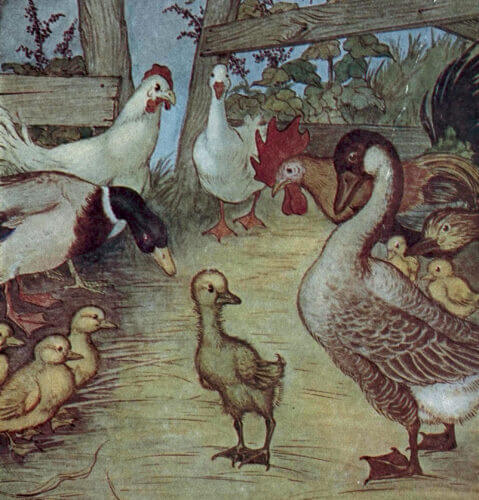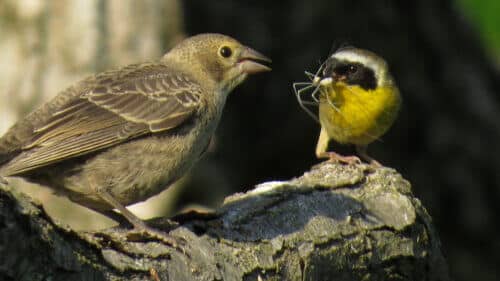LS asks "Is the ugly duckling story biologically possible?"

The Ugly Duckling is the story of the tribulations of a swan hatched in a goose's nest. Is it possible for a barbara to lay an egg in a foreign nest? The answer, surprisingly, is yes.
When Edward Jenner (who was the first to vaccinate humans from smallpox) discovered the secret of the cuckoo, the discovery was met with astonishment and disgust among his contemporaries and there were those who claimed that God did not intend for humans to know such embarrassing details about his creation. Today it is known that approximately one percent of bird species (about 100 out of 10,000) are complete parasites that do not nest at all. The best known of them is, as mentioned, the cuckoo whose lifestyle every child learns from Lea Goldberg's "Apartment for Rent"
".. Cuckoo abandons the boys
All her sons grew up in foreign reeds,
Everyone is deserted, everyone is promiscuous,..."
Nesting is a heavy chore and if possible, why not let someone else do the job. Indeed, evolutionary research has revealed that "egg parasitism" has been reinvented 7 times in the history of winged animals. Except for one odd species, all species of parasitic birds hatch as chicks that require close care and frequent feeding. It seems that for someone who starts life not as a naked chick but as a chick that pecks its own food, the gain from parasites is much smaller. An arms race has developed between the cuckoo and the efforts with a womb that fascinates biologists. The cuckoo takes out an original egg to make room for its own egg, the embryo develops quickly and takes care, in most species of parasites, to discard or kill its step-siblings.
Even the skeletal structure of the cuckoo chick is adapted to the first brutal task assigned to it, a depression in the back from the scapula bone down allows it a comfortable grip on the eggs as it pushes them out of the nest. The chick is equipped with signs that stimulate the feeding instinct in the nest owners and when chirps are required for this purpose, it produces a vocal force that is weighed against what all the original chicks were supposed to chirp together. The parasite bird's need to adapt to the host's behavior results in an accelerated fragmentation of the parasite population into new specialized varieties and species. The hosts, for their part, defend themselves with difficult-to-imitate hallmarks of the egg. Species prone to parasitic attack lay eggs that vary from nest to nest but are very similar to each other in the same nest so the cuckoo egg will stand out.
Unsurprisingly, the bird has difficulty with math: the bird will only recognize a foreign egg if it was placed in the nest before it itself began to lay, and will not be suspicious if there are suddenly four eggs in the nest instead of three. Defending against cuckoos is difficult, the most effective way is to keep the nest hovering around it and attack intruders, but such a tactic advertises the location of the nest to predators and leaves no time to gather food. When it detects a parasitic egg, the bird will sometimes try to peck at it and the cuckoo, in response, produces eggs that are particularly thick-shelled and tough. Alternatively, the bird can roll the cuckoo egg out of the nest, an action that may crack kosher eggs. Some birds will simply vacate a nest in which a foreign egg has appeared in order to try again elsewhere, for others the protective measures are too expensive and they prefer to pay the "parasite tax".

But what about Andersen's swan? It turns out that there is a wide gray area between parasitism and perfect independence. Many species of birds build a nest, lay in it and incubate, but in addition lay an egg or two in foreign nests, usually in females of their own species. The phenomenon is mainly common in birds that gather in dense breeding colonies, when the female lays a large number of eggs. In contrast to absolute parasitism, this "both" strategy is characteristic of hatchlings as chicks rather than chicks. All these characteristics are found in waterfowl such as the swan. DNA tests on species of ducks, geese and swans in the wild show that about a tenth of the chicks are "adopted" and in about a quarter of the nests at least one chick is found that comes from a parasitic egg.
Biologists are interested in this behavior because it is a unique example of a female's ability to choose her own reproductive strategy. Mother Barbora will lay the egg in a foreign nest when her own nest is damaged, when her condition does not allow incubation, and when the nest is simply full and this is the best alternative for throwing the excess eggs. The decision depends first of all on the resources: in conditions of severe shortage, the birds will concentrate on their own survival and will not lay at all, if the situation improves a little, parasitic laying will be preferred in which the mother only pays the nutritional price of the egg. Real nesting will be done when there are enough resources for it and if the situation is excellent and it is possible to produce excess eggs over the capacity of the nest, the female will lay them in additional nests and enjoy all the worlds. Sometimes what will influence the decision is simply availability. Laying a parasite is not a simple job: a market survey is required to find a suitable nest and a patient ambush for the appropriate time; This work becomes simpler the closer and more visible the neighbors are. This is how efforts to help duck populations failed when laying boxes were placed for them in a suitable place but with such a density that made the parasites too easy. When the nests had many eggs that were laid by stealth, the hatching was uncoordinated. "The Ugly Duckling" opens with the hatching of the ducklings and the insistence of the mother duck to add and incubate the unruly egg that is slow to crack, but in nature it is much more difficult to incubate and maintain a flock of chicks at the same time.
In contrast to the constant struggle between the cuckoo and its victims, it does not seem that the waterfowl bother to develop mechanisms to prevent parasitic laying of their own kind or even of related species. The price of an extra egg and an extra chick in the flock is simply cheaper than any means of cleaning the nest. Often the parasitic egg belongs to a relative, so incubating it makes sense in terms of the ambition to spread the genes. An additional chick may even improve the survival chances of the legitimate chicks because a predator attack is slightly less dangerous when there is a chance that the adopted son will be the one to serve as a meal and a large group may deter predators. The considerable percentage of "adopted" among swans may explain a strange phenomenon of "flock fusion" in which chicks from several nests form one group that is cared for by several adults. As you remember, the story of the ugly duckling ends by joining such a group of swans.
Did an interesting, intriguing, strange, delusional or funny question occur to you? Send to ysorek@gmail.com
In the same topic on the science website:
